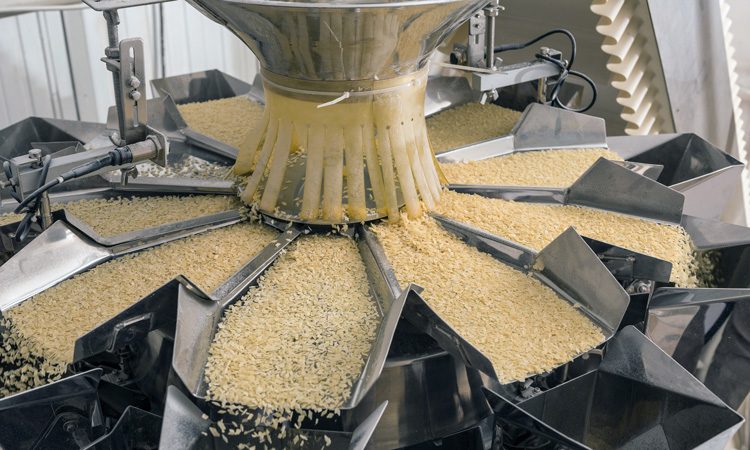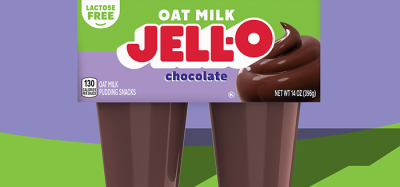Challenges in the use of food-grade lubricants
- Like
- Digg
- Del
- Tumblr
- VKontakte
- Buffer
- Love This
- Odnoklassniki
- Meneame
- Blogger
- Amazon
- Yahoo Mail
- Gmail
- AOL
- Newsvine
- HackerNews
- Evernote
- MySpace
- Mail.ru
- Viadeo
- Line
- Comments
- Yummly
- SMS
- Viber
- Telegram
- Subscribe
- Skype
- Facebook Messenger
- Kakao
- LiveJournal
- Yammer
- Edgar
- Fintel
- Mix
- Instapaper
- Copy Link
Posted: 23 October 2019 | Orsi Dézsi | No comments yet
Orsi Dézsi, Business Unit Manager of Nonfood Compounds & Food Contact Materials at NSF International, explains the context of the regulations, standards and trends around food-grade lubricants and why they should be considered a valuable part of your food safety strategy, rather than a tick box issue.


In my opinion, the classification and role of food-grade lubricants is now reasonably well understood by responsible manufacturers and specifiers. H1 is the only category registered for incidental food contact. Although H2 lubricants are sometimes erroneously also thought to be acceptable, in fact this is only true in non-contact applications, where there is a physical barrier or other measures in place to prevent cross-contamination with foodstuffs.
3H is a more limited use category where certain oil ingredients are classified as safe for incidental food contact. 3H oils are used as release agents and when dual registered as both 3H and H1, can be used as an incidental food contact lubricant. If nothing else, use of registered food grade lubricants are assumed to be a simple and safe way of avoiding the unwanted consequences of a product recall due to accidental product contamination.
Less understood is the need for operatives to be properly trained in lubricant application and the wider regulatory context in which they play a role. This is my conclusion after many years working with the non-food compounds team at NSF International. We are the sole source of global expertise in the application and registration of products according to these US Department of Agriculture- (USDA) defined categories.
USDA regulations set a maximum permitted amount of lubricant in incidental contact at 10 parts per million. In other words, H1 lubricants are not regarded as safe to ingest in even moderately small quantities. The current issue of the BRC Global Standard for Food Safety states: “Food-grade lubricants are formulated in such a way that if small quantities of technically unavoidable residues enter the processed product, they have no adverse effect and are deemed innocuous in terms of health, taste and odour. However, it should be noted that food-grade lubricants are not intended for human consumption or for contact with skin or mucous membranes.”
This means that a good understanding of the lubricant’s properties and recommended quantities of application is essential and, for this reason, we would always recommend that machine maintenance staff complete the training programmes that reputable manufacturers provide.
Although legal regulations surrounding food-grade lubricants have not changed in recent years, high-profile scandals, scares and tragic deaths are driving food safety standards and voluntary codes and schemes to become more comprehensive. For food manufacturers, compliance with the highest standards is becoming not simply a competitive advantage but often a ticket to trade.
In times of economic restriction, it may be tempting to look at price first when purchasing lubricants, but you ignore the detail at your peril
As has always been the case, the use of food grade lubricants forms a valuable part of a strong HACCP plan that looks at both the chemical and physical risks associated with food processing. They are also an important step in preparing for compliance with the Global Food Safety Initiative (GFSI) standards: BRC, IFS, ISO 22000 and SQF. Indeed, as these standards focus increasingly on the whole supply chain, the spotlight is not only now on food manufacturers but on their ingredient suppliers as well. Using registered products is a critical link in the supply chain, which can lead to success or failure in achieving certification to a GFSI benchmarked standard. The rise in the use of registered products is evidence of these trends.
For the same reasons, since the early 2000s we have seen an increase in registration to the ISO 21469 standard by lubricant manufacturers. ISO 21469 – Safety of Machinery – Lubricants with Incidental Product Contact – is a voluntary standard that was developed to specify the hygienic requirements not just for the formulation of the lubricants, but also their manufacture and use, providing both additional product reassurance for end users and extra brand marketing differentiation for manufacturers.
End user groups are increasingly specifying the procurement of registered products manufactured in ISO 21469-listed facilities. Countries such as China and Brazil, which are relatively new to the international supply chain, are specifying this standard as awareness of food safety grows in their food industries. Chinese lubricant manufacturers in particular are keen to grow their export markets and are benchmarking themselves against leading western manufacturers. The good news is that once a manufacturer has achieved H1 registration, it is relatively easy to progress to certification under the full ISO standard.
It pays to keep up with new and changing requirements
You can check if a lubricant product or lubricant manufacturer is certificated to ISO 21469 at the NSF Certification Listings.
Innovation is accelerating in food manufacturing. New types of equipment, such as robotic ovens and 3D food printers with complex moving parts and food contact surfaces, are coming onto the market. Similarly, lubricant manufacturers are constantly innovating to produce high-performance products with properties that are required for, or improve the functioning of, the latest machinery and in difficult environments. Food manufacturers must ensure operatives and maintenance staff are fully up to date with usage guidance.
High-profile scandals, scares and tragic deaths are driving food safety standards and voluntary codes and schemes to become more comprehensive
Today’s high-performance lubricants are precision formulated in a way that goes well beyond mere safety in food contact situations. They may, for example, contain allergen-free ingredients and additives that inhibit growth of microbial organisms and contribute to longer shelf life. Therefore, they can play a small but important role in helping to address wider issues such as allergen and contamination control. However, it is important to note that registration does not guarantee allergen claims. The NSF registration process verifies anti-microbial label claims but does not specifically analyse allergen claims.
Sometimes an issue comes out of left field. A recent and significant development has been the ban by France on the use of titanium dioxide as a food additive from 2020. The country’s health and safety agency said there was not enough evidence to guarantee the safety of the substance. It may well be that this ban will eventually become Europe-wide. Titanium dioxide can be found in various products that may contact food, including lubricants with incidental food contact and release agents (3H). We will be watching the developments closely.
Invest in a partnership with your supplier
In times of economic restriction, it may be tempting to look at price first when purchasing lubricants, but you ignore the detail at your peril. You should do your own due diligence on any claims such as antimicrobial properties and check that the product has the correct regulatory approvals for these, as they vary between countries and regions. In the EU, you must ask for verification from the supplier that they have the correct approvals for the relevant geographic markets.
Essentially, it is best to view your lubricants manufacturer as your partner, not your supplier, and use of registered products should be the foundation of your approach. As we like to say: you cannot measure what you cannot see, but we can.


About the author
Orsi Dézsi is the Business Unit Manager at NSF International for nonfood compounds and food contact material services. For the past 15 years, Orsi has worked closely with the regulatory community, industry stakeholders and clients to navigate the evolving global regulatory landscape in both material and chemical regulations.
Issue
Related topics
Food Grade Lubricants, Food Safety, Health & Nutrition, Hygiene, Regulation & Legislation, retail, Supply chain
Related organisations
British Retail Consortium (BRC), NSF International, US Department of Agriculture (USDA)









